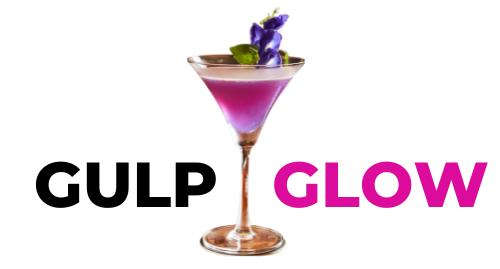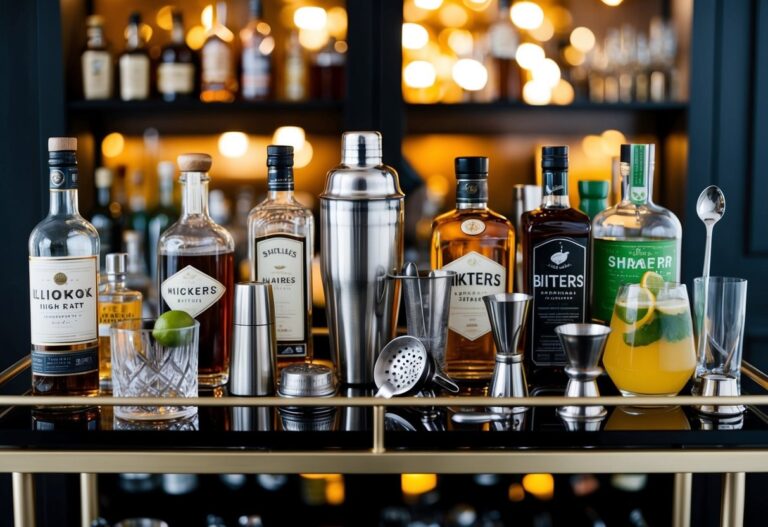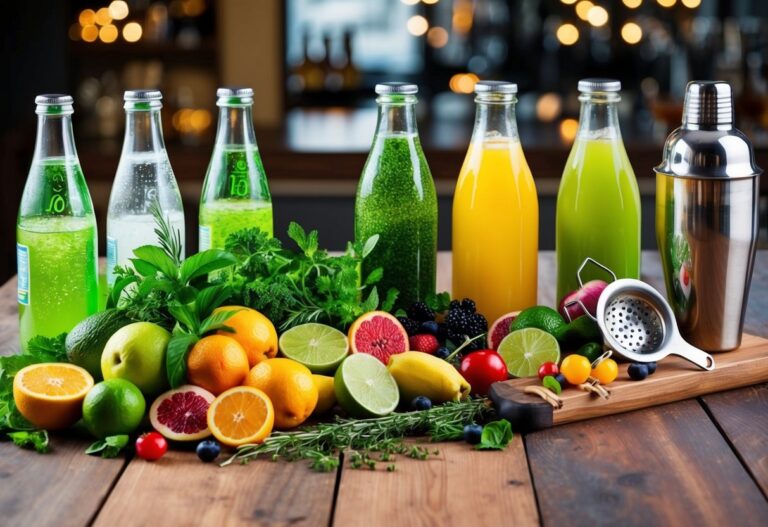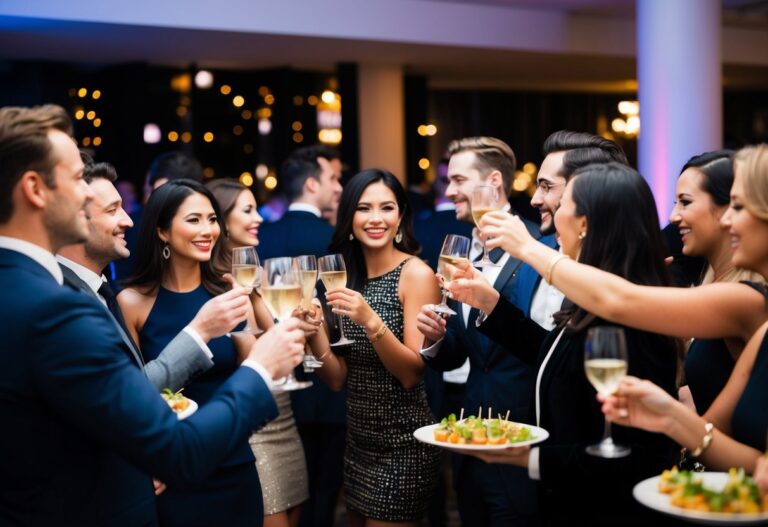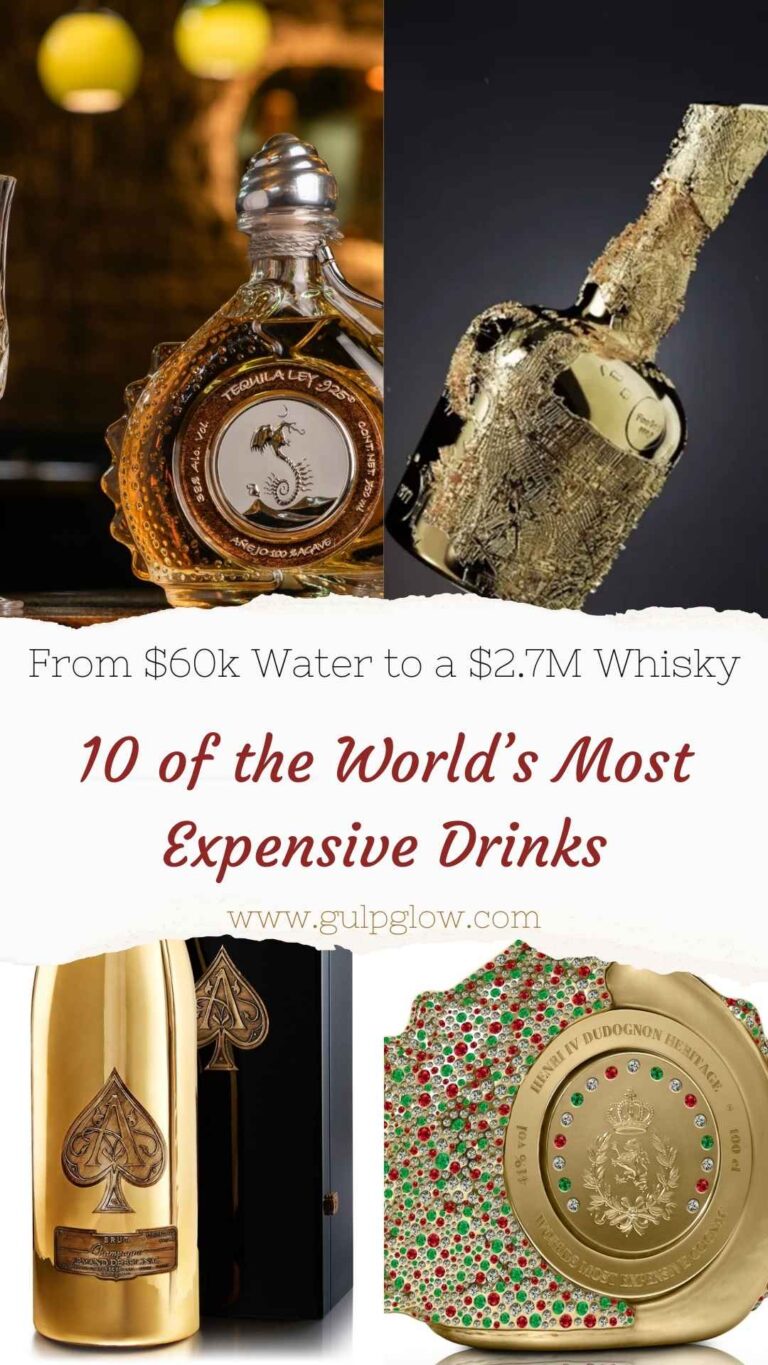The History of Cocktails: From the First Mixed Drink to Modern Mixology
Have you ever wondered where cocktails first came from? The story of cocktails goes back a long way. From the ancient Egyptians to the stylish bars of today, mixology has evolved significantly over centuries to the refined craft it is now. The term “cocktail” first appeared in a British newspaper in 1798, and by 1806, it was defined as a stimulating mixture of spirits, sugar, water, and bitters.
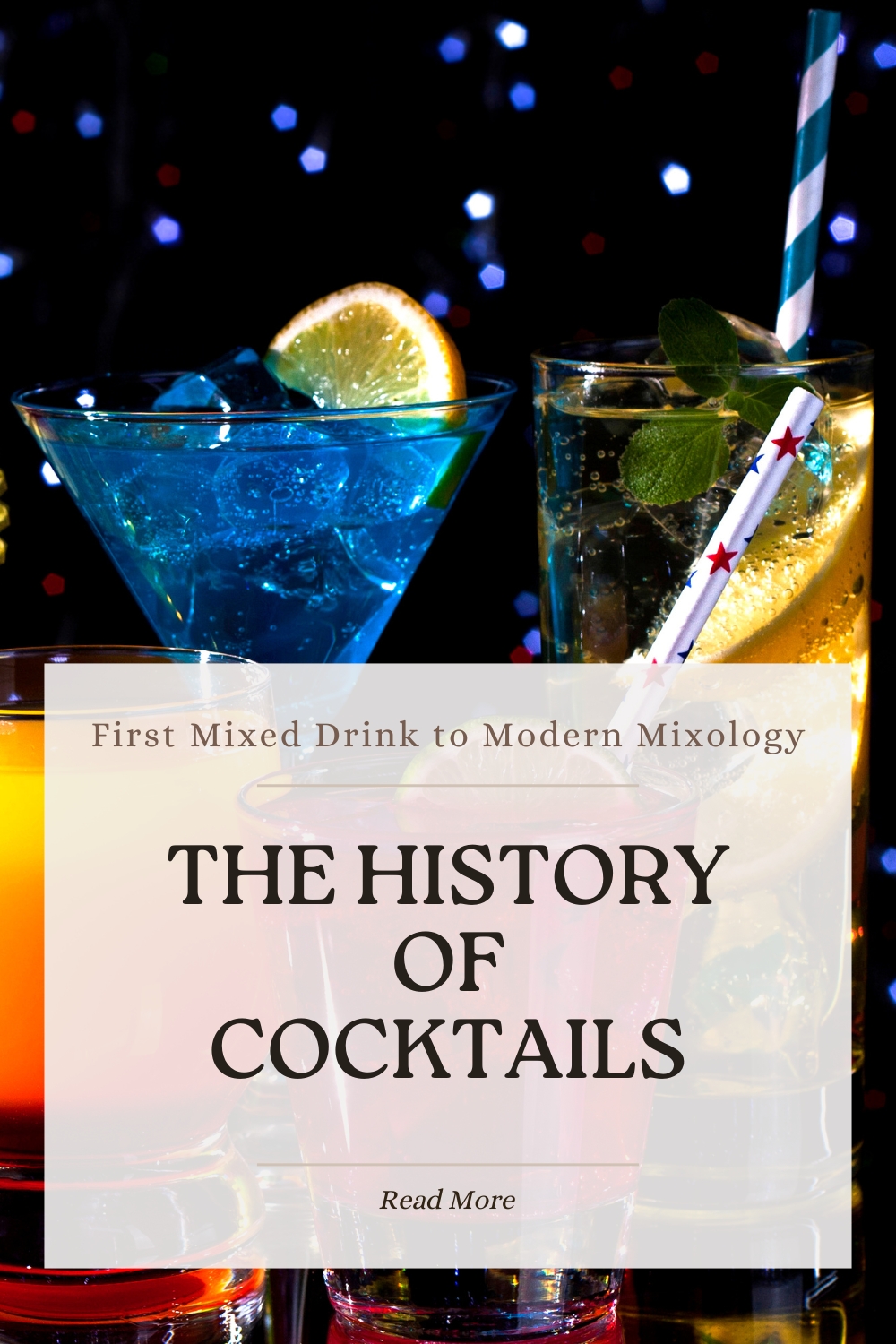
Between the 1860s and 1920s, American bartending truly blossomed, leading to what many call the Golden Age of Cocktails. Imagine the bustling bars of New York, where bartenders crafted drinks with flair and creativity. This period set the stage for the sophisticated and diverse cocktail culture we enjoy today.
Fast forward to the modern era, where places like Death & Co set trends and raised the bar for what cocktails could be. New techniques and a revived interest in classic recipes have made today’s mixology an exciting blend of tradition and innovation. Dive into this rich history and discover how each era contributed to the drinks we love.
Origins of Mixed Drinks
Mixed drinks have a rich history that dates back thousands of years, from ancient civilizations mixing stimulating liquors to the rise of punch in the 1600s and the eventual birth of cocktails in the 19th century.
Ancient Times and Stimulating Liquors
Ancient civilizations like the Egyptians were early pioneers in mixing liquids. They would blend wine, beer, and various herbs to create drinks that were both medicinal and enjoyable. The idea was to combine alcoholic beverages with other ingredients to make them more palatable and beneficial.
Romans also played a part by mixing wine with honey and spices. This not only improved flavor but also acted as a preservative. These early mixed drinks laid the groundwork for the future of cocktails by showing that spirits could be enhanced with other elements.
The Emergence of Punch
Punch made its debut in the 1600s, largely due to British sailors and traders. The original punch recipes typically included spirits like rum or brandy, water, sugar, citrus, and spices. This mix was both refreshing and practical, especially during long sea voyages.
By the 17th century, punch had become popular in England and other European countries. It was often served at social gatherings, and its ingredients were tailored to whatever was available locally. Punch laid the foundation for future mixed drinks, proving that spirits could be delightfully combined with a variety of flavors.
The Birth of Cocktails
The term “cocktail” first appeared in print in a British newspaper in 1798. It wasn’t until 1806, though, that the term was defined in an American publication as a mix of spirits, water, sugar, and bitters. This definition solidified what we now consider the classic cocktail.
Throughout the 1800s, America became the hub for cocktail innovation. With bartenders experimenting with new ingredients and techniques, cocktails evolved into a sophisticated art form. By the time Prohibition came into effect in 1920, numerous classic cocktails had already been established, setting the stage for modern mixology.
The Golden Age of Cocktails

During the Golden Age of Cocktails, bartending became an art form. This era saw the birth of many classic cocktail recipes, thanks to influential bartenders like Jerry Thomas.
Pioneers of Bartending
In the mid-19th century, bartenders started to get creative. These pioneers crafted new drinks and techniques.
Jerry Thomas, often called the “father of American mixology,” was one of the most famous bartenders. His book, How to Mix Drinks, published in 1862, became a foundational text. Bartenders like Thomas made cocktails such as the Martini and Manhattan household names.
Bartenders used exotic ingredients and theatrical presentation to wow patrons. Golden Age mixologists turned simple drinks into complex and exciting experiences.
Iconic Cocktail Recipes
The Golden Age brought us many cocktails we still love today.
- Manhattan: This cocktail combines whiskey, sweet vermouth, and bitters. It became a favorite due to its balanced taste.
- Martini: Made with gin and vermouth, garnished with an olive or a lemon twist. It’s a classic, elegant drink.
- Old Fashioned: A mix of bourbon or rye whiskey, sugar, water, and bitters. It’s often garnished with an orange slice and a cherry.
The Influence of Jerry Thomas
Jerry Thomas played a significant role in making cocktails popular.
His work wasn’t just about making drinks; it was about elevating the profession of bartending. Thomas traveled extensively, picking up techniques and ingredients from around the world. His flair for showmanship—like using silver shakers and his famous “Blue Blazer” flaming drink—set a high standard.
After Thomas, bartending was no longer just a job; it was a respected craft. His influence can still be seen in modern mixology. Today, bartenders continue to draw inspiration from his methods and recipes, keeping the spirit of the Golden Age alive.
Prohibition and Speakeasies

During Prohibition, America saw a massive shift in how alcohol was consumed and where it could be found. This period not only gave rise to illegal drinking spots called speakeasies but also changed the landscape of cocktail culture forever.
The Impact of the Prohibition Era
Prohibition, enacted in 1920, aimed to curb alcohol consumption. Bootleggers stepped in, supplying illegal alcohol. Law enforcement was constantly on their tail. You have to imagine the great lengths people went to, just to get a drink.
Meanwhile, some creative folks started making alcohol at home, leading to shady business practices. Surprisingly, it also led to innovations in how alcohol was produced and consumed. This underground movement reshaped the drinking culture in ways we still see today.
The Rise of Speakeasies
As bars were forced to close, speakeasies emerged. Imagine hidden bars behind bookcases or secret doors. These spots thrived on being hush-hush. Passwords were often needed to enter.
Speakeasies weren’t just about surviving without legal drinks; they became hotspots of social life. Jazz music, dancing, and clandestine cocktails defined the scene. The illegal status made them even more appealing, as if stepping into a different world altogether.
Cocktails During Prohibition
During this time, cocktails had to mask the taste of poorly made alcohol. You wouldn’t want to taste the rough edges of bathtub gin, right? Flavors like citrus and sugar became essential.
Classic drinks like the Mary Pickford and Sidecar were born. These drinks often used herbs, spices, and fruit juices to cover the harsh flavors. Mixologists got creative, blending ingredients in new ways to deliver a better taste. This era truly pushed the boundaries of mixed drinks, setting the stage for the craft cocktail movement we enjoy today.
Post-Prohibition Developments
After the end of Prohibition, the world of cocktails experienced significant changes, with legitimate bars reopening and cocktail culture evolving dramatically. People began to experiment with new techniques and ingredients, taking bartending to a new level.
The Return of Legitimate Bars
When Prohibition ended in 1933, bars were legally allowed to operate again. Many old establishments reopened, while new ones popped up. These legitimate bars had to meet legal standards and regulations.
Before Prohibition, cocktails like the Old-Fashioned and the Martini were already popular. The return of bars reignited interest in these classics. Even famous hotels like the Waldorf Astoria began to hire talented bartenders to attract customers.
With the rebirth of bars, bartenders started mixing drinks using better-quality ingredients. Fresh juices, exotic liqueurs, and aged spirits became the norm. This revival also led to the establishment of bartending schools, where aspiring mixologists learned essential skills.
The Evolution of Cocktail Culture
Post-Prohibition saw a boom in cocktail culture. People were eager to try new and innovative drinks. Bartenders began to experiment, creating custom cocktails for their patrons.
The 1940s and 1950s were a golden era for cocktail culture. Drinks like the Mai Tai and the Margarita became household names. Bartenders used innovative techniques, such as layering spirits and garnishing with fresh herbs and fruits.
The rise of tiki bars, with their tropical themes and exotic drinks, added a fun twist to cocktail culture. Don the Beachcomber and Trader Vic’s became iconic spots for cocktail lovers.
By the 1960s and 1970s, bartending had become more standardized. Cocktail recipes were printed in books, and people could make these drinks at home. This period also saw the rise of celebrity bartenders, who contributed to popularizing cocktails further.
Modern Mixology

Modern mixology has revolutionized the world of cocktails, blending tradition with innovation. From the rise of the craft cocktail movement to the advent of new techniques, this section explores the key elements shaping today’s cocktail culture.
The Craft Cocktail Movement
The craft cocktail movement put the focus back on quality. It started in the early 2000s, driven by a desire for real, high-quality ingredients. This movement emphasized the use of fresh juices, artisanal spirits, and homemade syrups. Bartenders turned into artists, crafting drinks that were not only tasty but also beautiful to look at.
Dale DeGroff, often called “King Cocktail,” played a big role in this movement. He inspired many bartenders to take mixology seriously. It wasn’t just about pouring drinks anymore; it was about creating an experience. The craft cocktail movement changed the way people thought about cocktails, bringing back forgotten recipes and old-school techniques.
Innovations in Cocktail Making
Innovation is a big part of modern mixology. Today, bartenders use a variety of new techniques to create unique drinks. Molecular mixology is one of the most exciting developments. This technique uses science to change the texture and appearance of cocktails, making them a feast for both the eyes and the taste buds.
Nitrogen freezing, spherification, and foams are some examples. These methods create drinks that might look like they belong in a science lab. But these are tasty and fun. High-tech tools like liquid nitrogen and carbonation guns are now common in many bars, allowing mixologists to push the boundaries of what a cocktail can be.
Famous Mixologists and Trends
Famous mixologists have helped shape modern cocktail culture. Besides Dale DeGroff, there are others like Audrey Saunders and Tony Abou-Ganim, who are well-known for their creativity and skill. They have introduced new trends and techniques that others in the industry now follow.
One trend is the use of locally-sourced and seasonal ingredients. Bartenders are focusing on sustainability and freshness. Another trend is the rediscovery of old spirits and liqueurs, which has led to a resurgence of classic cocktails with a modern twist.
Mixologists are also tapping into global flavors, incorporating spices, herbs, and fruits from around the world. This is making the cocktail scene more diverse and exciting. Crafting cocktails has truly become a form of art, with mixologists at the forefront of this creative wave.
Cocktails Around the World

Cocktails reflect the culture and tastes of the countries they come from. From the classic concoctions of Europe to the creative mixtures in the United States, each region adds its unique twist with local ingredients.
Cocktail Variations Across Cultures
Travel across Europe, and you’ll notice each country has its signature drink. France brings us the elegant Kir Royale made with crème de cassis and champagne. Spain offers the fruity Sangria, a mix of red wine, chopped fruit, and a splash of brandy. Italy is famous for the Negroni, a bitter-sweet blend of gin, Campari, and vermouth.
In the United States, cocktail culture is about innovation. The Mojito, with its Cuban roots, became popular here, blending white rum, sugar, lime juice, soda water, and mint. The Margarita, a Mexican classic, combines tequila, lime juice, and Cointreau or triple sec for a refreshing kick.
Don’t forget Asia! Japan’s whiskey highball is a smooth mix of whiskey and soda water. Meanwhile, South Korea’s Soju cocktails range from fruity to savory, often mixed with fresh ingredients like cucumber or tomato juice.
Influence of Global Spirits and Ingredients
Different spirits and ingredients heavily influence cocktail creation across the globe. Gin from the United Kingdom, used in cocktails like the classic Gin and Tonic or the floral French 75, adds a botanical note. Vodka from Russia and Poland is versatile, forming the base of drinks like Bloody Mary and Cosmopolitan.
Tequila, native to Mexico, shines in cocktails such as the Paloma and Tequila Sunrise. Rum, popular in the Caribbean, stars in drinks like the Piña Colada and Daiquiri, capturing the tropical essence. Sake, from Japan, is used not just in traditional cocktails but also in contemporary mixed drinks, providing a unique umami flavor.
The use of local ingredients like herbs, fruits, and spices makes each cocktail a story of cultural heritage and innovation. You’ll find cocktails flavored with everything from lemongrass in Southeast Asia to aromatic bitters in Latin America, showcasing the world’s rich diversity through every sip.
Essentials of Cocktail Crafting

Creating a great cocktail involves knowing the right ingredients, mastering various techniques, and paying attention to presentation.
The Art of Mixology
Mixology is not just about mixing drinks; it’s about understanding the balance of flavors and knowing how to enhance them. This crafting requires creativity and precision.
You’ll need to learn the basics, like how much alcohol, sugar, and bitters to use. Experimenting with different combinations helps you find your signature style. Famous bartenders often innovate by incorporating unique ingredients like infused syrups or homemade bitters.
Key Ingredients and Tools
Ingredients: Essential ingredients include spirits (vodka, gin, rum, whiskey), mixers (soda, juice, tonic), and enhancers like sugar, bitters, and fresh herbs. Quality ice is also crucial for the perfect chill and dilution.
Tools: Key tools include a jigger for measuring, shaker for mixing, strainer for pouring, and a bar spoon for stirring. A variety of glasses like highballs, martini glasses, and old-fashioned glasses are needed to serve different cocktails appropriately.
Techniques and Presentation
Mastering cocktail techniques can make or break your drink. Key techniques include shaking (for blending and chilling), stirring (for delicate drinks), and muddling (for extracting flavors from fruits or herbs). Each technique impacts the final taste and texture.
When it comes to presentation, it’s all about the details. Use garnishes like citrus peels, cherries, or mint leaves to add visual appeal. Serve your creations in the right glasses to enhance the overall experience. A well-presented cocktail not only tastes great but also looks inviting.
The Professional Bartender

Being a professional bartender means more than just mixing drinks. It involves a mix of skills, knowledge, and a passion for the craft. Let’s explore what it takes to thrive in this profession.
The Role of a Bartender
A bartender wears many hats. You’re not just making drinks but also engaging with customers, managing inventory, and keeping the bar area clean. Customer service is key—you need to be friendly, attentive, and quick on your feet. You’re responsible for creating a welcoming atmosphere and ensuring that everyone has a good time. Mixing cocktails to perfection, taking orders, and remembering regulars’ favorite drinks are all part of the job.
Building a Career in Bartending
Starting out as a bartender usually means you’ll begin in an entry-level position. You can work your way up by gaining experience and proving your reliability. Many successful bartenders started as barbacks or servers. Networking is also crucial—it helps you learn about better job opportunities and stay updated on industry trends. Some bartenders even compete in cocktail competitions, which can boost your career and reputation. With experience, many move into management roles or open their own bars.
Mixology Education and Certification
If you want to stand out, formal education can help. Many bartenders take mixology classes to learn advanced techniques and new recipes. Certification programs, like the ones offered by the International Bartenders Association, provide a credential that can enhance your resume. These programs cover topics like the history of spirits, the science of mixing, and customer service skills. Continuous learning is key in this field, as trends and customer preferences change rapidly.
Frequently Asked Questions

Curious about the history of cocktails and their evolution? Here are some common questions and answers covering origins, notable inventors, and the development of mixology over time.
What are the origins of the first mixed drinks considered to be cocktails?
The earliest mixed drinks date back to ancient Greece and Rome. These civilizations mixed wine with honey and herbs to create flavorful beverages. In the 18th and 19th centuries, what we now think of as cocktails began to form, initially in the United States.
Can you trace the evolution of cocktails through a historical timeline?
Yes! Cocktails evolved significantly over the centuries. During Prohibition in the 1920s, cocktails surged in popularity due to speakeasies. The Tiki craze of the mid-20th century introduced tropical drinks. More recently, the Cocktail Renaissance of the early 21st century brought back interest in classic cocktails and craft bartending.
Who is credited with inventing the first cocktail, and what was it?
The title of the first cocktail is often attributed to the Sazerac, created by Antoine Peychaud in New Orleans in the 1830s. Made with cognac or rye whiskey, bitters, absinthe, and sugar, it became popular at Peychaud’s apothecary.
How did the practice of mixology develop and change throughout history?
Mixology began with simple combinations and evolved into a sophisticated craft. Early mixologists experimented with spirits and ingredients to create unique drinks. During Prohibition, creativity flourished. The recent Cocktail Renaissance revived traditional methods and recipes, emphasizing quality and craftsmanship.
What is the significance of the Old Fashioned in cocktail history?
The Old Fashioned is a cornerstone of cocktail culture. First mentioned in 1806, it became known by its current name in the 1880s. Traditionally made with whiskey, sugar, bitters, and water, it represents the essence of classic cocktail making.
When did ready-to-drink cocktails emerge, and how have they influenced modern mixology?
Ready-to-drink cocktails emerged in the mid-20th century but gained significant popularity in recent years. These pre-mixed beverages have enabled more people to enjoy cocktails conveniently. They have also pushed the industry to innovate with new flavors and formulations, bridging the gap between traditional and contemporary mixology.
